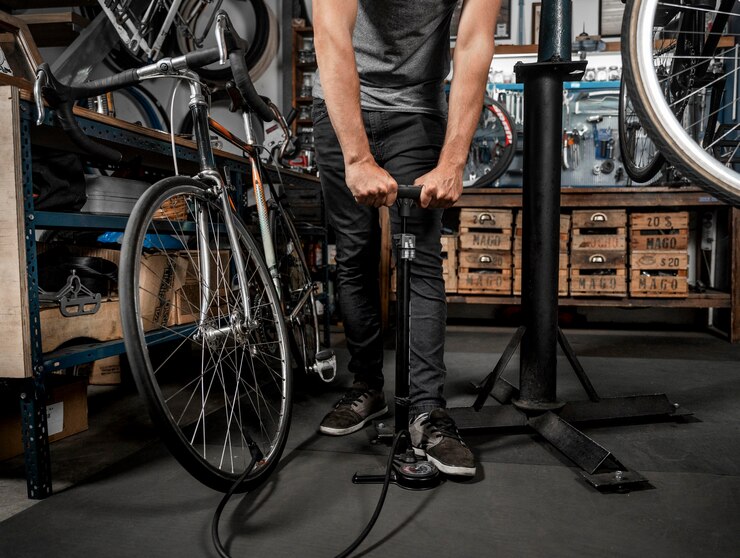If you are a bike enthusiast, you probably know how important it is to keep your tires properly inflated. But do you know how to use a floor pump for bikes? A floor pump is a device that allows you to pump air into your tires with ease and accuracy.
It has a long hose, a pressure gauge, and a valve head that fits most types of valves. Using a floor pump regularly can help you save time, energy, and money, as well as prevent flat tires and damage to your bike. In this blog, we will show you how to use a floor pump for a bike in a few simple steps.
You will learn how to choose the right pump, how to set the correct pressure, and how to inflate your tires safely and efficiently.
Understanding the Floor Pump
A floor pump is a tool that helps you inflate your bike tires with ease and accuracy. It is usually made of metal or plastic and has a long hose that connects to a valve head. The valve head can fit different types of valves, such as Presta, Schrader, or Dunlop.
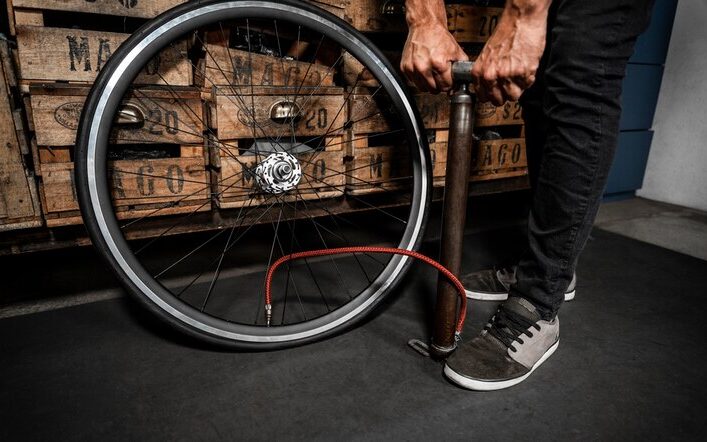
A floor pump also has a pressure gauge that shows you how much air pressure is in your tires. There are different types of floor pumps available in the market, but the most common one is the standard floor pump.
This type of pump has a base that rests on the floor and a handle that you push down and pull up to pump air. Some floor pumps have additional features, such as dual-head compatibility, which allows you to switch between different valve types, or a bleed valve, which lets you release excess air from your tires.
Presta vs. Schrader valves
Presta and Schrader are two types of bike valves that are used to inflate bike tires. They differ in size, shape, and function. Presta valves are narrower and longer than Schrader valves, and they have a lock nut that needs to be unscrewed before inflating.
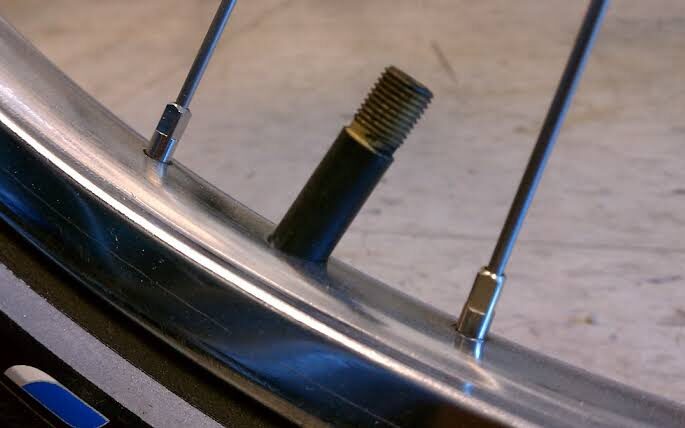
Schrader valves are wider and shorter than Presta valves, and they have a spring-loaded pin that opens when pressure is applied. Presta valves are more common on road bikes and high-end mountain bikes, as they can handle higher pressures and are less prone to air leakage.
Schrader valves are more common on casual bikes and low-end mountain bikes, as they are easier to use and compatible with most pumps and gas stations. Knowing the difference between Presta and Schrader valves can help you choose the right pump and valve adapter for your bike.
How to Use a Floor Pump for Bikes?
1. Check Tire Pressure
One of the most important aspects of bike maintenance is checking the tire pressure regularly. The tire pressure affects the performance, comfort, and safety of your ride. But how do you know what is the right pressure for your bike?
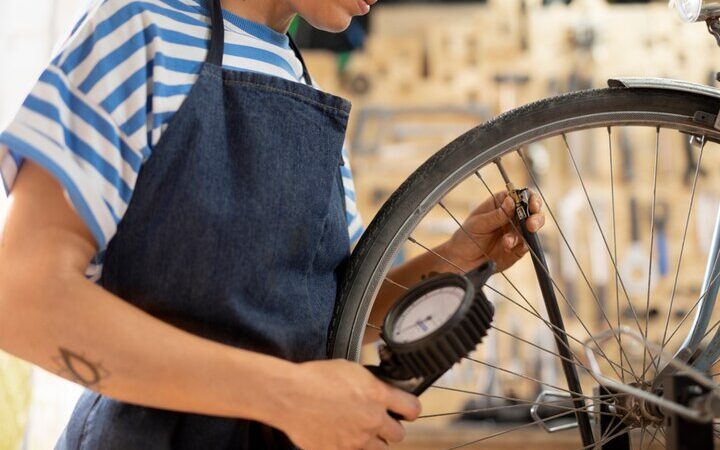
The easiest way to find out is to look at the sidewall of your tire, where you will see a range of numbers in psi (pounds per square inch) or bar (atmospheres). This is the recommended pressure for your tire, depending on the type and size of your bike.
You can also check the owner’s manual of your bike for more guidance. To measure the current tire pressure, you need to use a pressure gauge, which is usually attached to the floor pump. Simply connect the valve head of the pump to the valve of your tire, and read the pressure on the gauge.
If the pressure is too low or too high, you need to adjust it by adding or releasing air from the tire. The amount of air you need depends on the recommended pressure and your riding conditions.
For example, if you ride on rough terrain, you may want to lower the pressure slightly to increase traction and comfort. If you ride on smooth roads, you should increase the pressure slightly to reduce rolling resistance and prevent punctures.
2. Choose the Right Valve Type
Look at the shape, size, and mechanism of the valve on your bike. A Schrader valve is wider, shorter, and has a spring-loaded pin in the center that you can press to release air. A Presta valve is narrower, longer, and has a small nut that you can unscrew to open the valve.
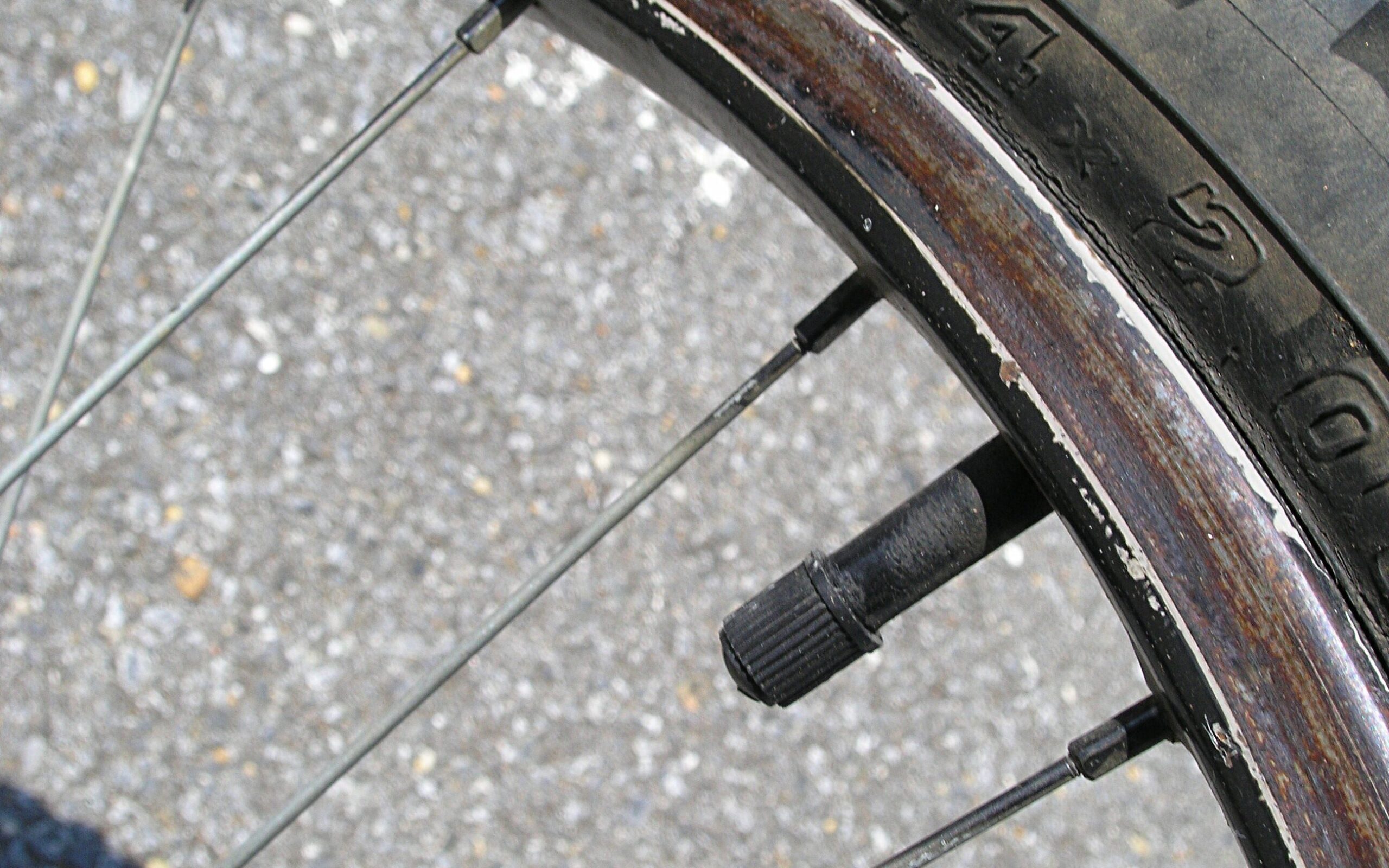
Schrader valves are more common on mountain bikes and hybrid bikes, while Presta valves are more common on road bikes and racing bikes. Use the floor pump that matches your valve type, or use an adapter if you have a different pump.
To do this, you have to unscrew the valve cap and open the valve. For a Schrader valve, you just need to press the pump head onto the valve and lock it with a lever.
For a Presta valve, you need to unscrew the nut until you hear a hiss of air, then push the pump head onto the valve and lock it with a lever. Some pumps have a dual head that can fit both types of valves, so you need to select the correct size for your valve.
3. How to Attach Bike Pump to Valve?
Position the valve on the wheel in a way that makes it easy to access and remove the pump head. A good position is at the 3 or 9 o’clock position, which means the valve is either on the right or left side of the wheel. This way, you can avoid hitting the cassette or disc brake, usually located at the 6 or 12 o’clock position, when you pull out the pump head.

Attach the pump head to the valve by pushing it firmly and locking it with the lever. Depending on the type of valve you have, you may need to unscrew the valve cap and open the valve before attaching the pump head.
Ensure the pump head matches the valve type, or use an adapter if needed. Some pumps have a dual head that can fit both Schrader and Presta valves, so you need to select the correct size for your valve.
4. Inflate Tire
Use the floor pump to inflate the tire, by placing your feet on the pump’s base and moving the handle up and down. You can adjust the speed and force of your pumping depending on how much air you need to add.

Monitor the pressure gauge on the floor pump by reading the numbers and the color-coded zones. The numbers show you the current pressure in psi or bars.
Moreover, the zones indicate whether the pressure is too low, too high, or just right. You can also use a handheld gauge to double-check the pressure.
Stop inflating the tire by releasing the lever and pulling the pump head off the valve. You may hear a small burst of air, which is normal. Then, you need to close the valve and screw the valve cap back on. Now, repeat the process for the other tire.
Tips for Effective Floor Pump Use
Clean the pump head and the hose regularly to prevent dirt and dust from clogging the valve or the gauge. You should also lubricate the piston and the seal to prevent friction and wear. You should check the pressure gauge for accuracy and replace the batteries if it is digital.
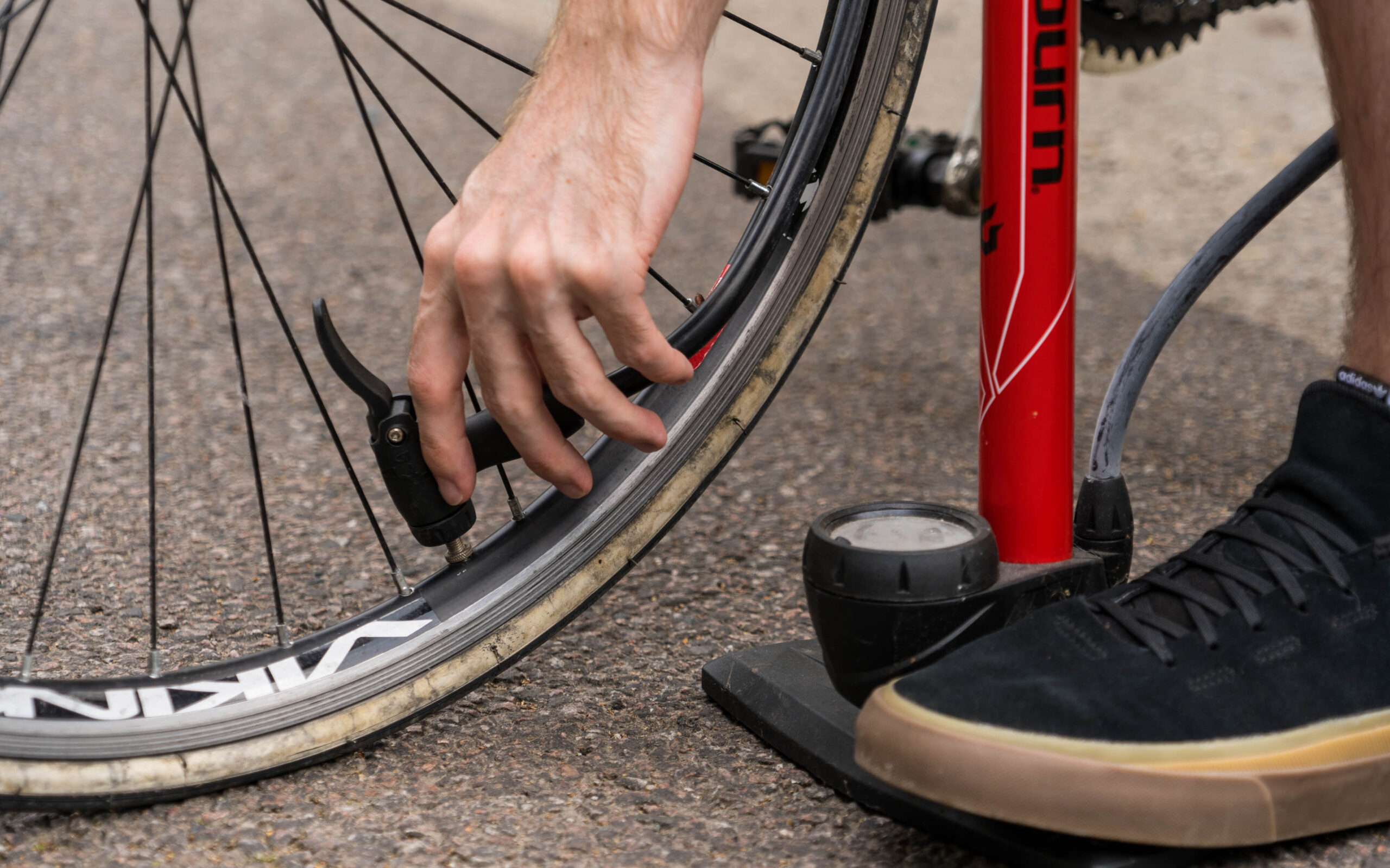
Store the floor pump in a dry and cool place, away from direct sunlight or heat sources. You should also avoid bending or twisting the hose and wrap it around the pump’s base. You should keep the pump head and the valve cap on to protect them from dust and moisture.
If you have trouble attaching the pump head to the valve, you may need to adjust the lever or the adapter. Check the seal or the valve. Reset the gauge or the pump.
Conclusion
So, how to use a floor pump for bikes? It is one of the best ways to ensure optimal performance and safety on the road or trail. Proper tire pressure can make a big difference in your riding experience, as it affects speed, comfort, traction, and durability.
A floor pump is easy to use and can quickly inflate your tires to the desired level. You should check your tire pressure regularly and adjust it according to the conditions and your preferences.
If you have any feedback, questions, or stories to share, please leave a comment below or visit our website or social media pages.
FAQs
Yes, because it is faster, easier, more accurate, easy to use, and can reach higher pressures.
Check for leaks, valve issues, or punctures causing bike tire inflation problems with the pump.
Use CO2 inflators, compressors, or tire sealants as alternatives.
Your bike pump may push back if the pressure in the tire is higher than the pump can handle. Use a different pump or release some air.

